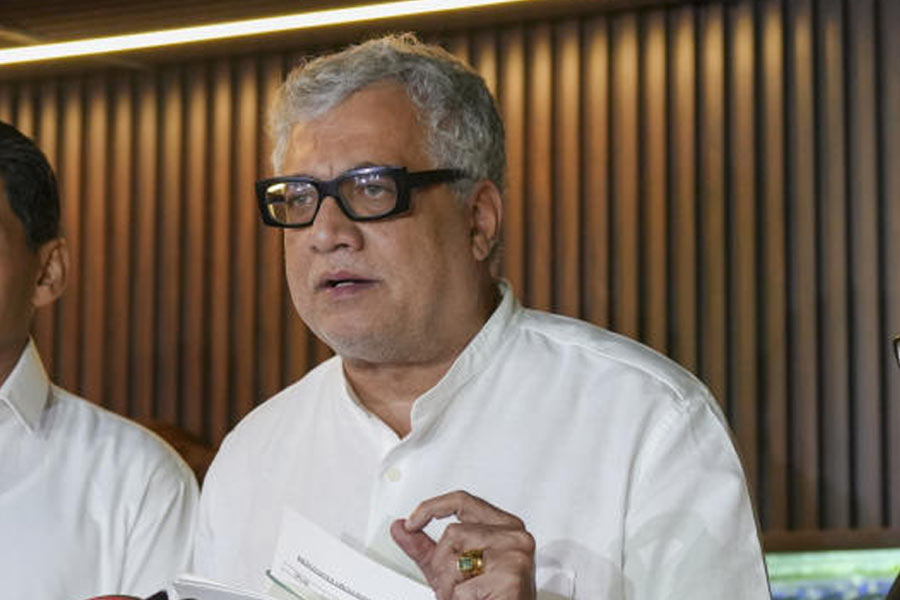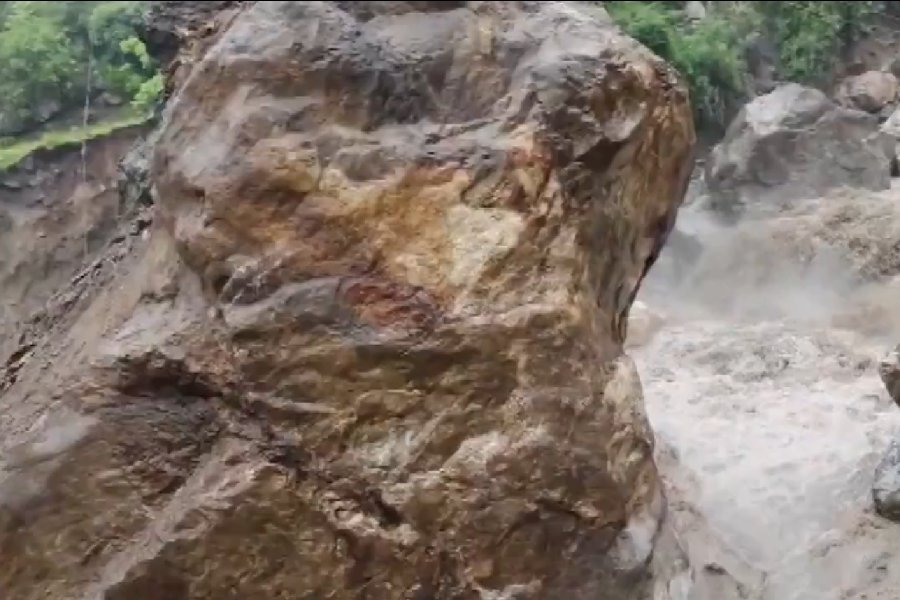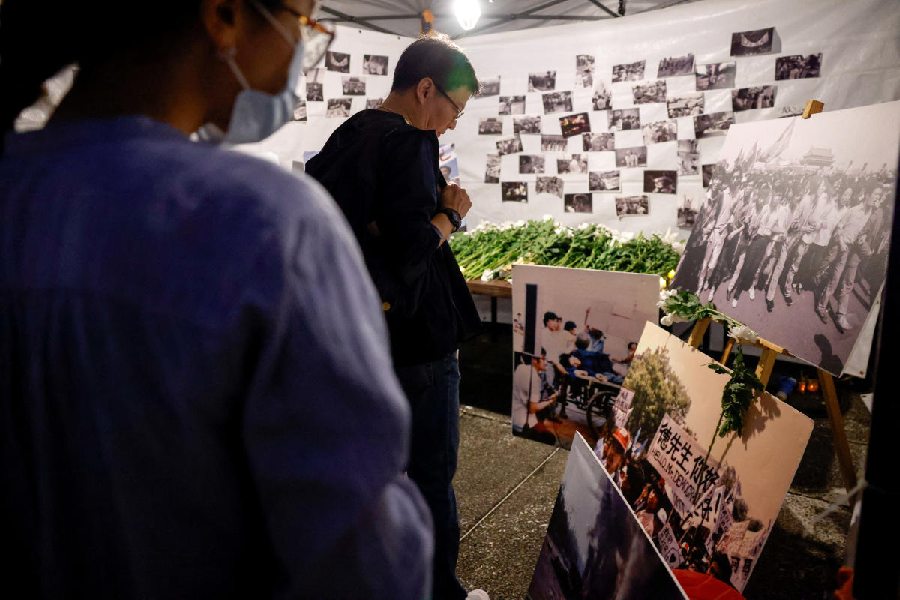
A cat sits quietly on a wall in a building in a crowded area of Delhi. Dadasaheb Phalke is looking at a roll of film in Mumbai's Bandra. A series of chinar trees stands tall on the columns of a Srinagar flyover.
Suddenly, drab old walls are getting a splash of colour.
"The idea is to change the landscape of Indian cities. India is so colourful but our streets don't portray the real image. Also, our walls are covered with political posters and advertisements. We want to change this look," says Giulia Ambrogi, the festival curator of St+Art India Foundation, a Delhi-based non-profit organisation which promotes street art. "We want to create new landmarks in our cities."
The movement for public art in Indian cities started in 2012 when a group of 10 people came together to give shape to a unique festival in one of Delhi's densely populated urban villages, Khirki Extension. Brought together by the Delhi-based artist forum, Khoj International Artists Association, and supported by advertising agency W+K Exp, the festival sought to beautify the congested streets of Khirki with wall paintings.
"This festival was the first open engagement between public and art in that place," Ambrogi says. It also gave birth to the foundation, and soon similar projects were being taken up in different parts of the city.
The Foundation chooses a site based on the visibility of the building or the walls and subsequently puts up a proposal with the owner of the space. Once permission is granted, it commissions artists to paint the wall, or the facade.
One of the new landmarks of Delhi is the huge mural of M.K. Gandhi which adorns a side wall of the police headquarters in central Delhi. The artist, Anpu Varkey, put this up in collaboration with a German artist, Hendrik Beikirch.
Varkey believes that street art in India is catching on. "When people see these paintings on the streets, they often want us to paint their homes and walls, too," the 34-year-old graduate from the Baroda School of Art says.
Street art has also picked up in Mumbai, Pune, Calcutta, Bangalore, Varanasi and Srinagar. Efforts are made to give the art a theme that complements the place where it appears. For example, the walls of a working women's hostel in Bandra has a black-and-white image of Mother Earth. Called Prakriti, it has been painted by Pune-based Harshvardhan Kadam, who perceives Nature as a divine feminine force.

"The beauty and grace of the self-reliant Mother Earth has similarities with the qualities of self-belief and self-sustainability of women," Kadam explains. "A hostel that supports women itself is a strong statement. It was apparent I would draw a woman here."
Similarly, the otherwise dull white wall of the Delhi cold storage building in Azadpur, known for its mandis, is now all black, with a few fruits and vegetables placed next to a candle. The painter is Miami-born Alejandro Hugo Dorda Mevs, better known as Axel Void.
"Since the cold storage is used for freezing fruits and vegetables, this image is relevant," says St+Art India Foundation co-founder Arjun Bahl, who commissioned the project.
The campaign also seeks to introduce art to people who have no access to galleries. "We chose this wall because this building is a part of the lives of so many people - such as rickshaw pullers and vegetable sellers - who have not been exposed to art but who would be happy to see such a colourful image," Bahl adds.
Artists use acrylic distempers, enamel paints and spray cans for street paintings. They also have their favourite subject. Varkey loves to work with cats and Japan-based Lady Aiko, who recently painted an image of the Rani of Jhansi on one of the walls of Lodhi Colony, mostly focuses on women. Kadam, who has a master's in design from IIT, Bombay, finds mythology intriguing.
"Mythological characters are my superheroes. But they don't carry religious connotations because street art has to be non-controversial," says Kadam, whose painting, Six horses of Sun God, has been wowing passers-by in Delhi's Shahpur Jat for the past one year.
For onlookers, indeed, the paintings are a change from graffiti and posters. Calcutta, known for its political slogans on walls, now has an image of the Ganges on the boundary wall of the German consulate in Alipore. The work, by graffiti artist Samita Chatterjee (or Samsam), shows a youth trying to clean the river, represented in dark blue and black and dotted with fish bones, painted in white-grey, highlighting a toxic build-up.
In Srinagar, too, passers-by who were earlier used to anti-India slogans on the walls now find art on the streets. Six young artists have been asked by the Srinagar Municipal Corporation to beautify walls.
"These paintings depict the lives of Kashmiris - rural lifestyles, folk art and the scenic beauty. We are also planning to have more images of the 'good old days' when Kashmiri Pandits and Muslims lived happily together," Srinagar municipal commissioner Tufail Mattoo says.
Street art is fairly new to India, though some public spaces have been encouraging and exhibiting art. But across the world, it has been an enduring trend, especially in cities such as New York, London and Berlin.
"But street art in India doesn't follow the same trend as that of the West. In the West, it is mostly artist-centric where they mark a territory and leave their impression on the wall. But our street art has a lot of local relevance. This is mostly about our people and their lives," Kadam feels.
Globally, the interest on Indian street art is growing. "India is definitely a good place for painting," says Germany-based Christian Kreamer (known as Dome), whose painting Coming Home - a human figure, animals and objects such as a guitar and a bicycle - is up on the Diamond Arch Building in Bandra.
Art experts view the trend as a "positive" movement in contemporary times. "Artists have been moving away from the confines of studio spaces and painting in public spaces. The world of street art defines these spaces as canvases. These creations are also seen as reflections of our society in its various facets," says National Gallery of Modern Art director Rajeev Lochan.
Street art also seeks to celebrate the fact that it is nobody's possession, but belongs to everybody. "The most important philosophy of street art is that the artist should never own the space," 34-year-old Ruchin Soni, who has painted a three-wing figure called Angel on the walls of the Tihar jail in Delhi, says.
This form of art also underlines that nothing is permanent. "After some months, the colours will fade. Perhaps the space will be taken over by another artist later," Soni says.
Meanwhile, though, it certainly is a sight for sore eyes.











